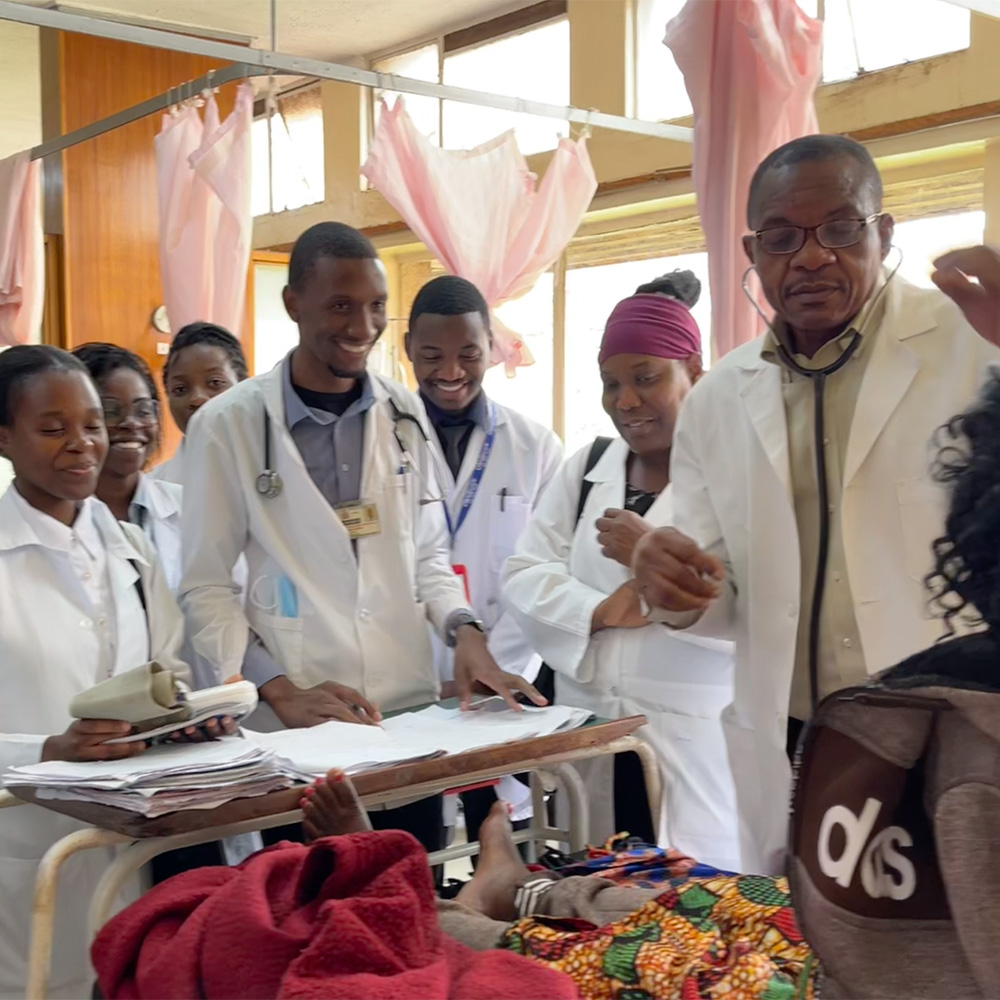Study links small RNA molecule to pregnancy complication
DALLAS – Oct. 24, 2016 – A family of small RNA molecules affects the development of cells that give rise to the placenta – an organ that transfers oxygen and nutrients from mother to fetus – in ways that could contribute to a serious pregnancy complication, UT Southwestern Medical Center researchers report.

The findings, published today in the Proceedings of the National Academy of Sciences, suggest that microRNA-515-5p (miRNA-515-5p) might someday be the basis of a blood test to identify women at risk for the condition called preeclampsia, or lead to a target for treatment, said Dr. Carole Mendelson, Professor of Biochemistry, and Obstetrics and Gynecology at UT Southwestern.
This is one of the first studies to identify a specific function for any member of this large, multimember microRNA family, Dr. Mendelson said. Located on human chromosome 19, miRNA-515-5p is found only in primates and is primarily expressed in the placenta.
During the third trimester of pregnancy, preeclampsia can come on suddenly and affect virtually every part of the body with symptoms that include dangerously high blood pressure, protein in the urine and, in severe cases, seizures. Preeclampsia is considered a significant contributor to premature births as well as maternal and neonatal illness and death.
The National Institutes of Health estimates preeclampsia affects 5 to 10 percent of pregnant women worldwide and 3 to 5 percent in the United States. According to the World Health Organization, about 40 to 60 percent of maternal deaths in developing countries are due to this condition.
Early in a successful pregnancy, placental trophoblast cells enter the wall of the mother’s uterus and enlarge blood vessels to facilitate oxygen and nutrient exchange between mother and fetus. As the placenta develops its blood supply, the tissue sends chemical signals via hormones and other substances that help to maintain the pregnancy and support growth of the fetus, explained Dr. Mendelson, also Director of the North Texas March of Dimes Birth Defects Center.
“Preeclampsia is a disease of insufficient placental development. Basically, the placenta does not implant properly into the uterus and is believed to have a reduced blood supply and insufficient oxygen,” she said. The compromised placenta is thought to produce abnormal molecules that cause hypertension and sometimes damage the kidneys.
Dr. Mendelson’s lab has long studied microRNAs, small RNA molecules that prevent the production of specific proteins by targeting the corresponding messenger RNA needed to create, or translate, the protein. MicroRNAs can degrade the messenger RNAs directly or can disrupt the translation step into proteins.
In this study, the researchers used a human placental cell culture system that mimics aspects of trophoblast differentiation. During culture, the cells fuse together and begin to produce high levels of placental hormones, such as estrogen and progesterone. As the cells differentiated and fused, the levels of miRNA-515-5p went down dramatically, Dr. Mendelson said. Consequently, levels of three messenger RNAs and three protein targets of miRNA-515-5p, which are essential for placental development, all increased.
“It’s as if the miRNA-515-5p puts the brakes on the differentiation,” she said. “As the levels of miRNA-515-5p decrease, the brakes are released and placental differentiation occurs.”
However, in placentas from women who had PE, the miRNA-515-5p levels remained abnormally high, and levels of messenger RNA and three protein targets critical for tissue differentiation were significantly decreased compared to levels in placentas from women without preeclampsia. This finding supports a role for miRNA-515-5p in proper placental development and function, she said.
“We suspect that miRNA-515-5p keeps the trophoblast cells in an undifferentiated stem cell-like state until a critical time in pregnancy when the brakes are released and differentiation occurs,” Dr. Mendelson said. “But the research is still in its early stages, with much more work to be done to better characterize this pathway and its many players.”
Co-authors include: lead author Dr. Ming Zhang, a former UTSW postdoctoral researcher in Biochemistry now on the faculty of Wuhan University in China; Dr. Sribalasubashini Muralimanoharan, an Instructor of Biochemistry; and Dr. Alison Wortman, a former maternal-fetal medicine fellow in Obstetrics and Gynecology.
The study was supported by an NIH grant.
About UT Southwestern Medical Center
UT Southwestern, one of the premier academic medical centers in the nation, integrates pioneering biomedical research with exceptional clinical care and education. The institution’s faculty includes many distinguished members, including six who have been awarded Nobel Prizes since 1985. The faculty of almost 2,800 is responsible for groundbreaking medical advances and is committed to translating science-driven research quickly to new clinical treatments. UT Southwestern physicians provide medical care in about 80 specialties to more than 100,000 hospitalized patients and oversee approximately 2.2 million outpatient visits a year.




